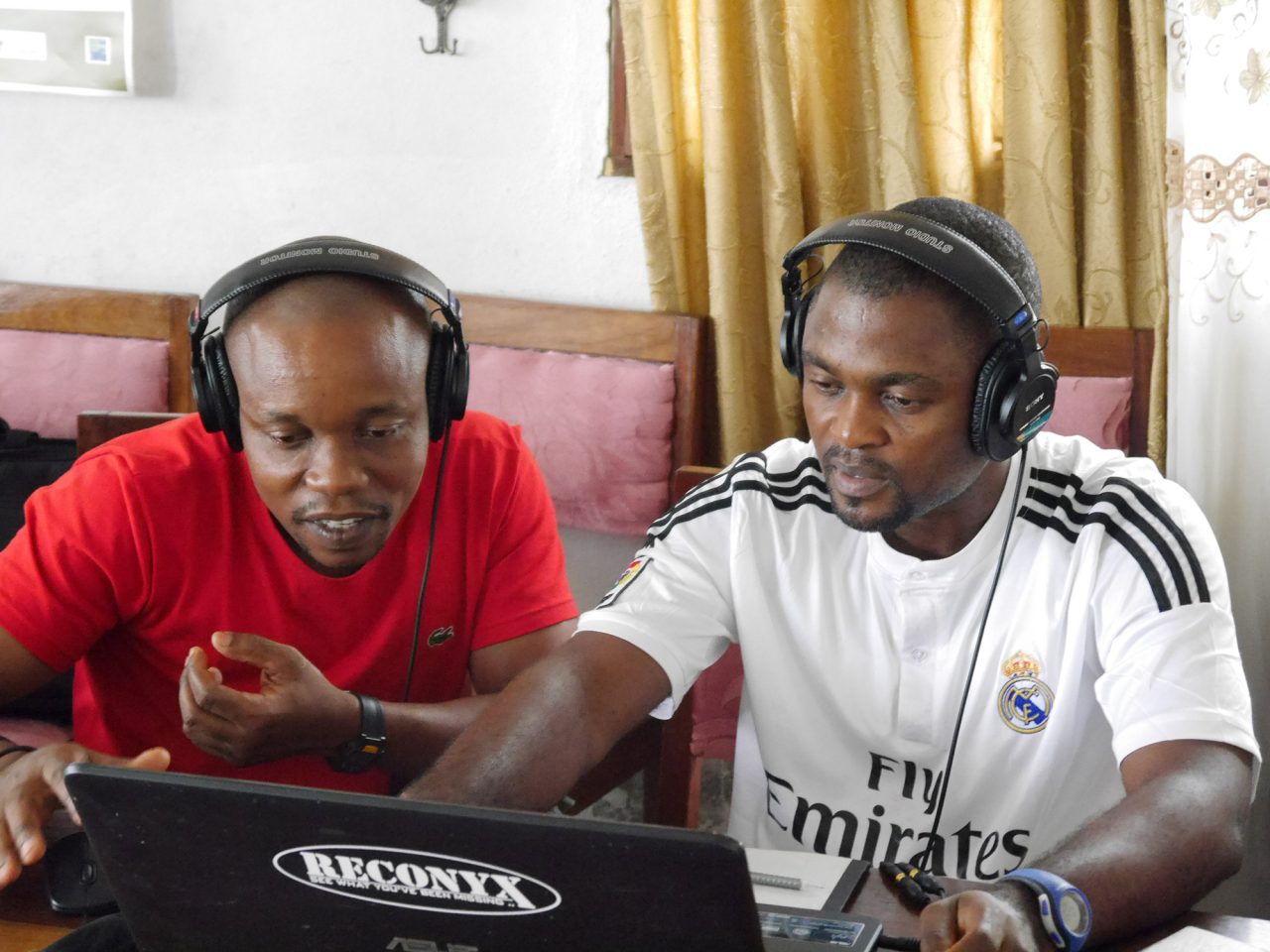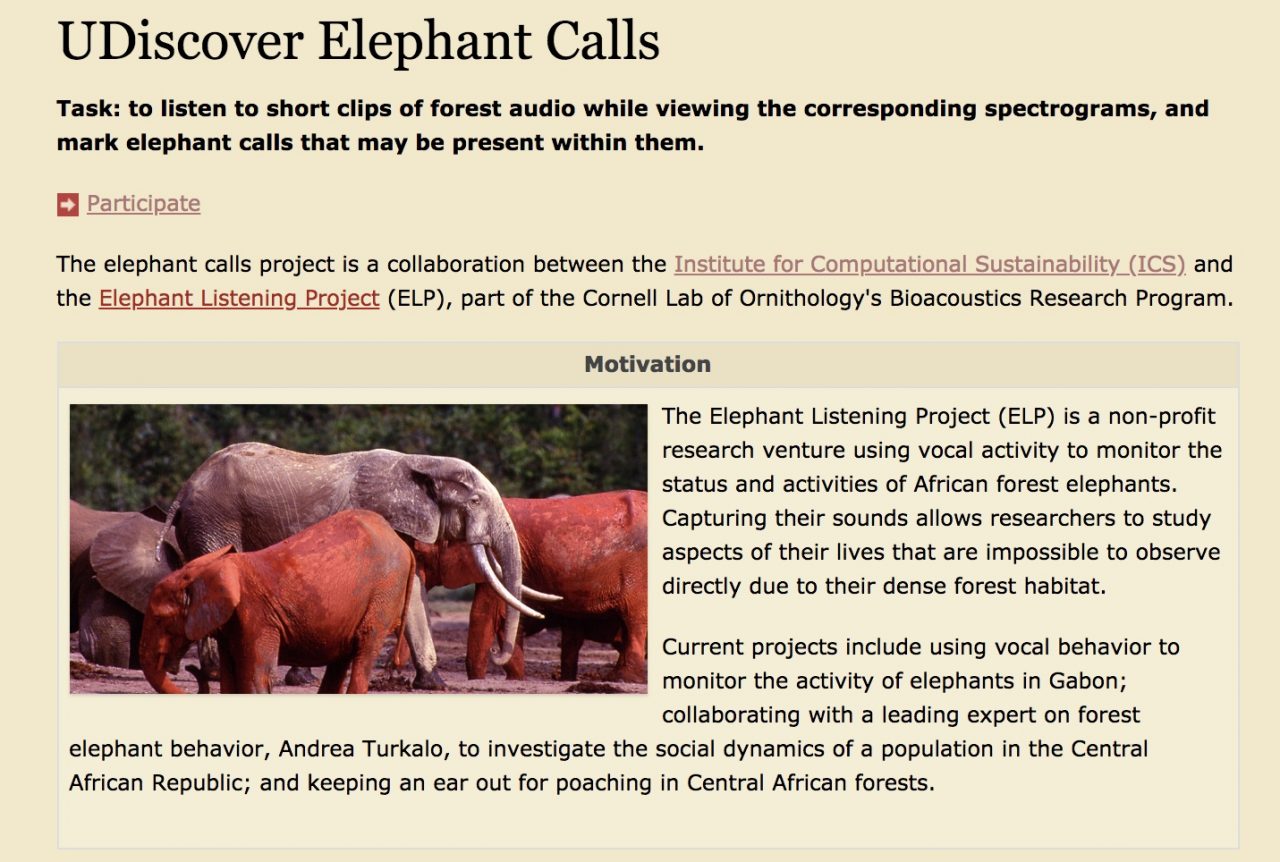Citizen Science

The Cornell Lab of Ornithology is a pioneer in the field of Citizen Science—engaging the public to contribute to meaningful science through participation. We are often asked how a concerned citizen can help us achieve out goal of protecting forest elephants, but unless they can actually join our analysis team, it has been difficult to satisfy this important demand except through monetary donation. Finally we have a web-based interface that can serve up small segments of our recorded sounds so that a user can identify and tag the rumbles of forest elephants or the crack of a gunshot.
As we strive for monitoring ever larger portions of the landscape, public participation is looming as a critical component for success. In partnership with the Institute for Computational Sustainability (ICS), we have designed an interface that hopes to accelerate scientific discovery by leveraging human intuition within processes of data analysis. Many tasks that are not feasible to be solved by a computer can be solved more easily by people, or are easier to explain to a human then encode for a computer.

Although we don’t expect participants in our project to be experts, if citizen science is going to help us with elephant conservation, it is critical to maintain the integrity of the data our participants produce. We welcome everyone to give this a try. We hope that you will find it both fun and rewarding—because if it works, you will be helping us to change the course of conservation for forest elephants.
The setup is not too difficult:
- navigate to the beginning page Udiscover Elephant Calls
- read a bit of background, then click on “Participate“
- you will be required to register as a participant and login to your account. The most important reason for having individual user accounts is so that we can use comparisons of the selections of different participants to automatically score confidence that we have the correct answer for a given clip of sound.
- take the tutorial. This will familiarize you with the interface, what a spectrogram is, and how to identify an elephant rumble.
- then try an annotation task

